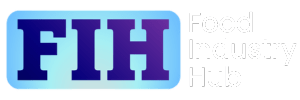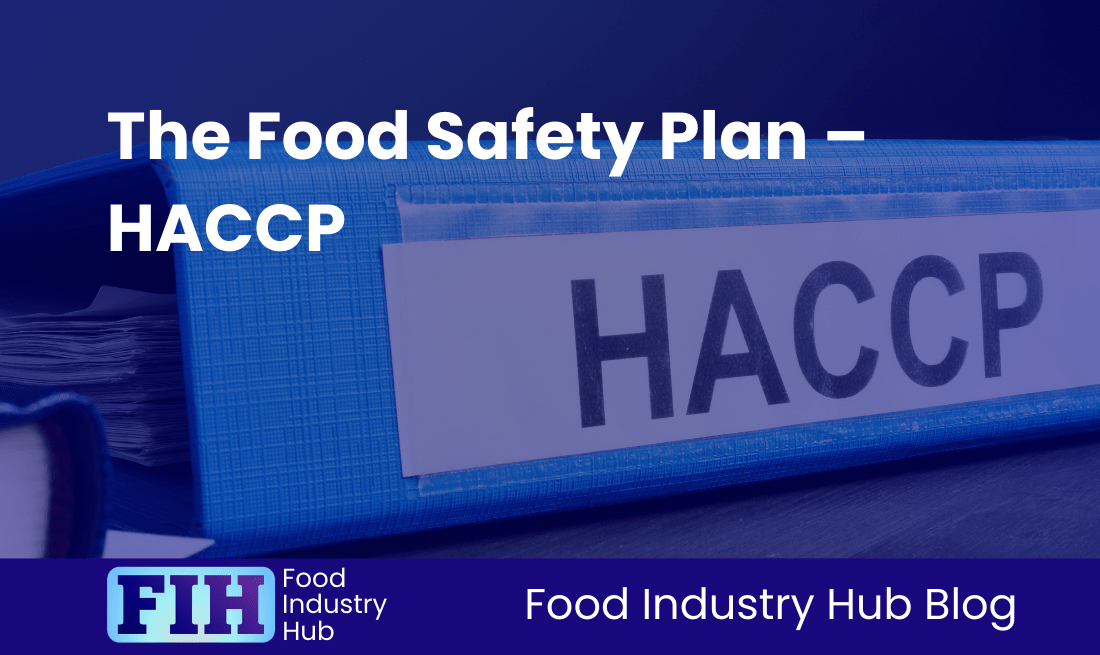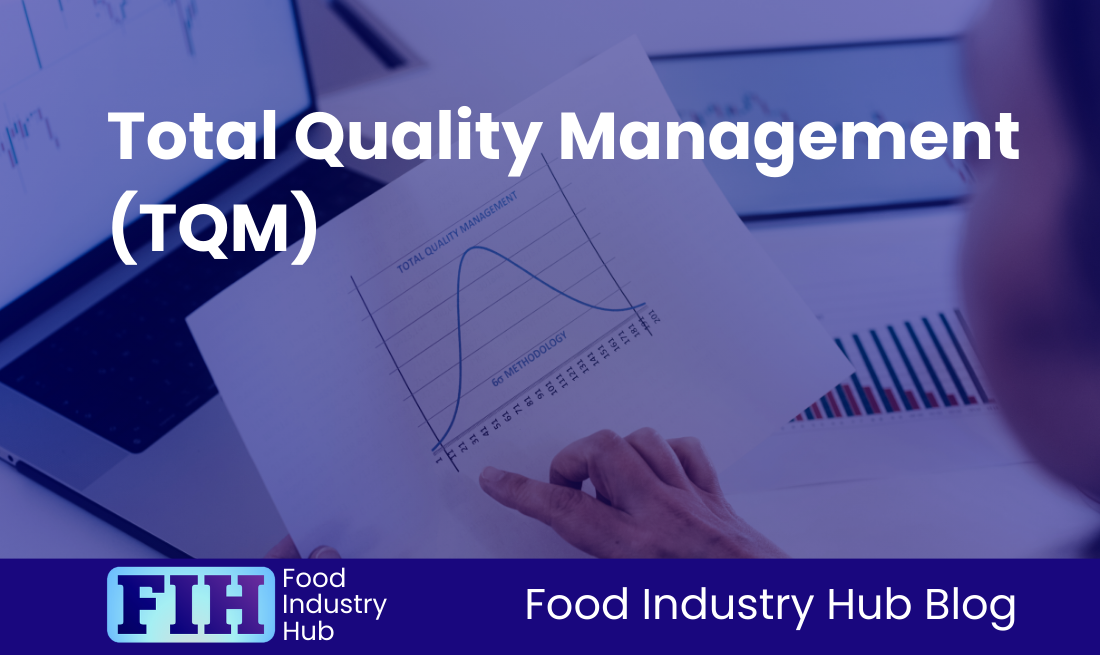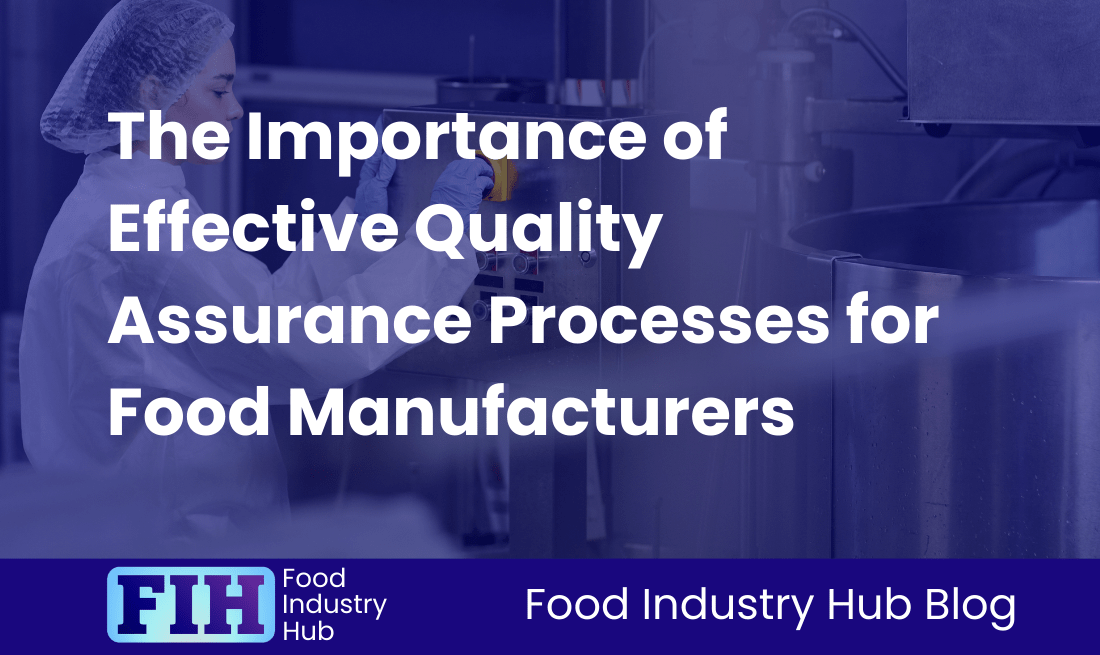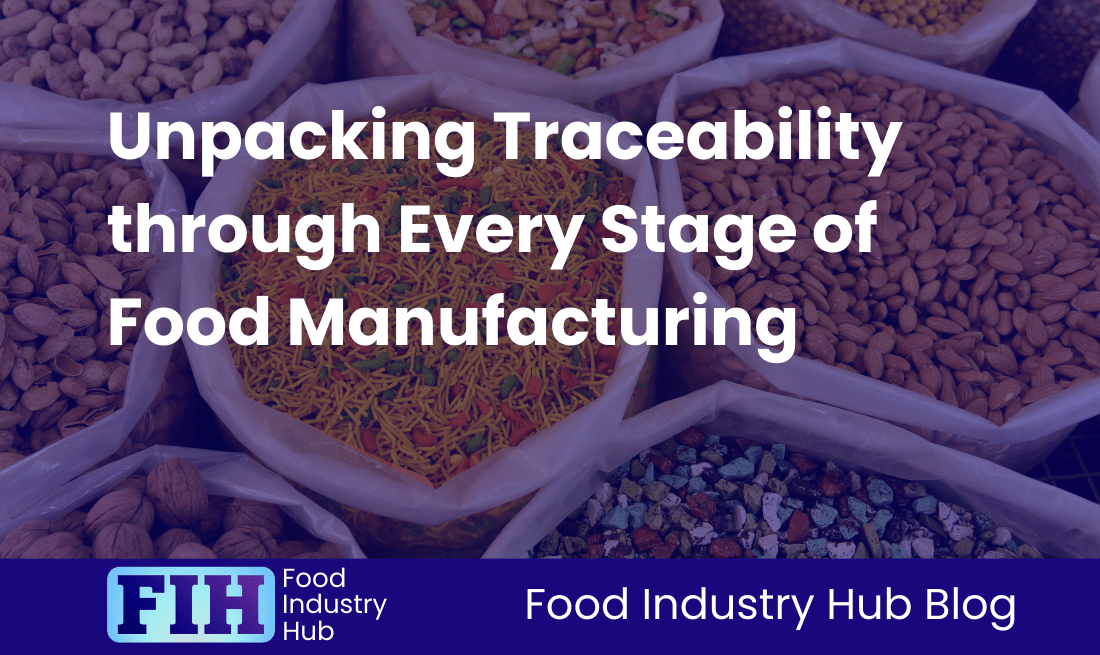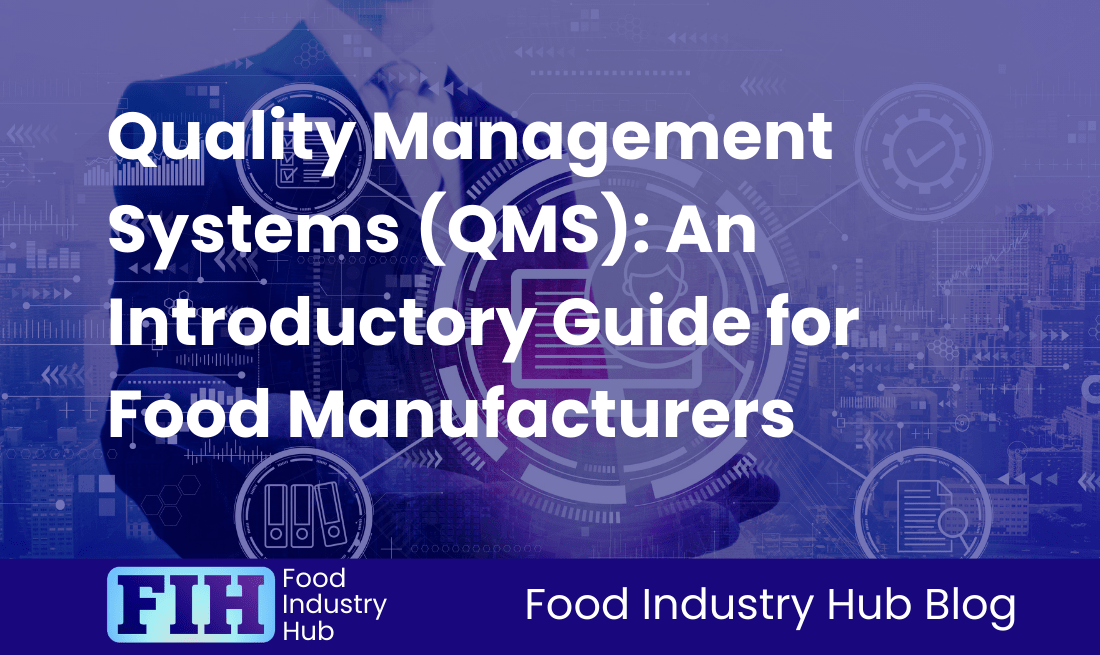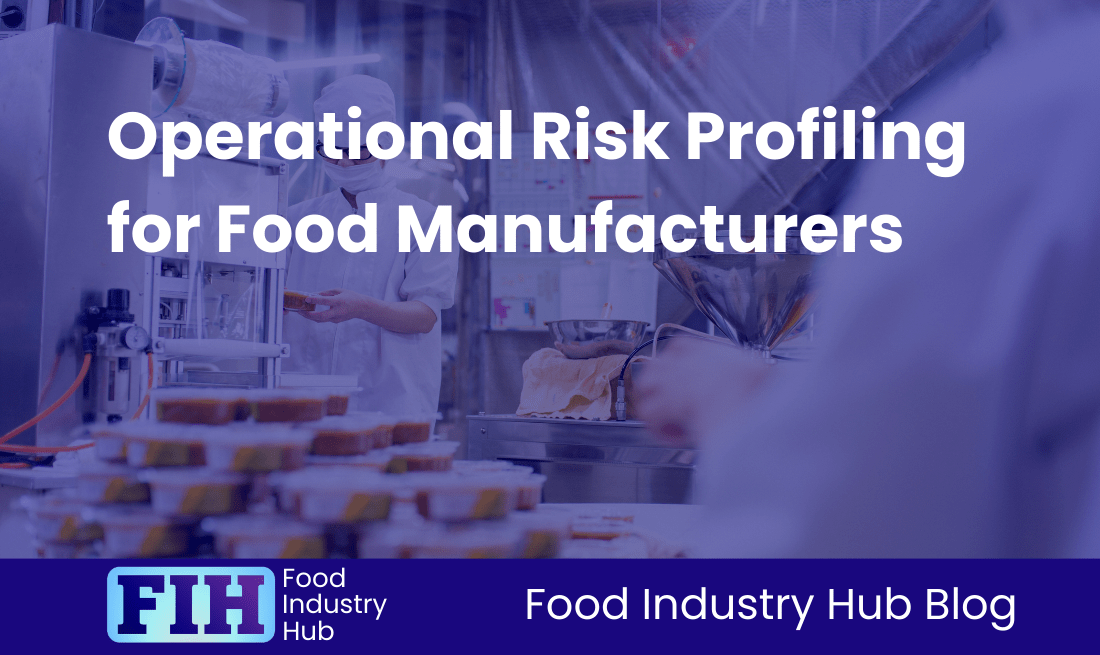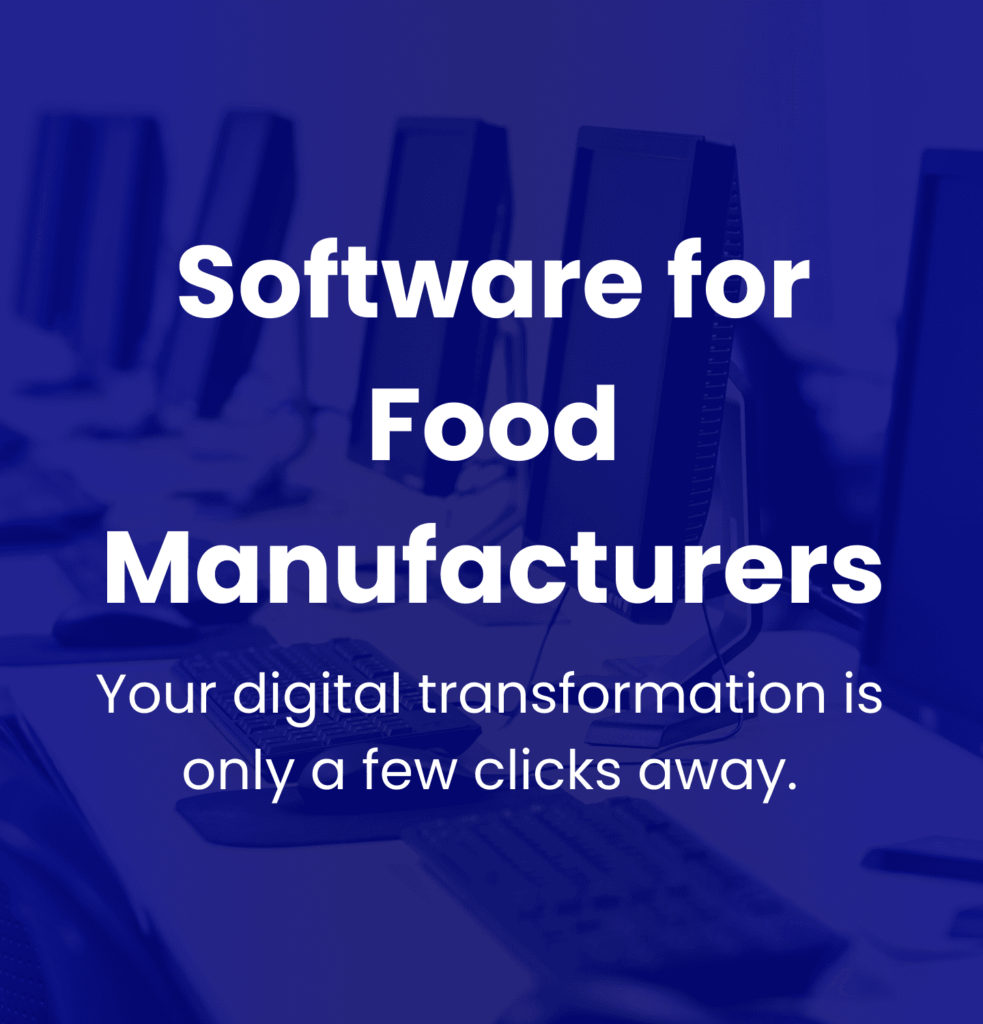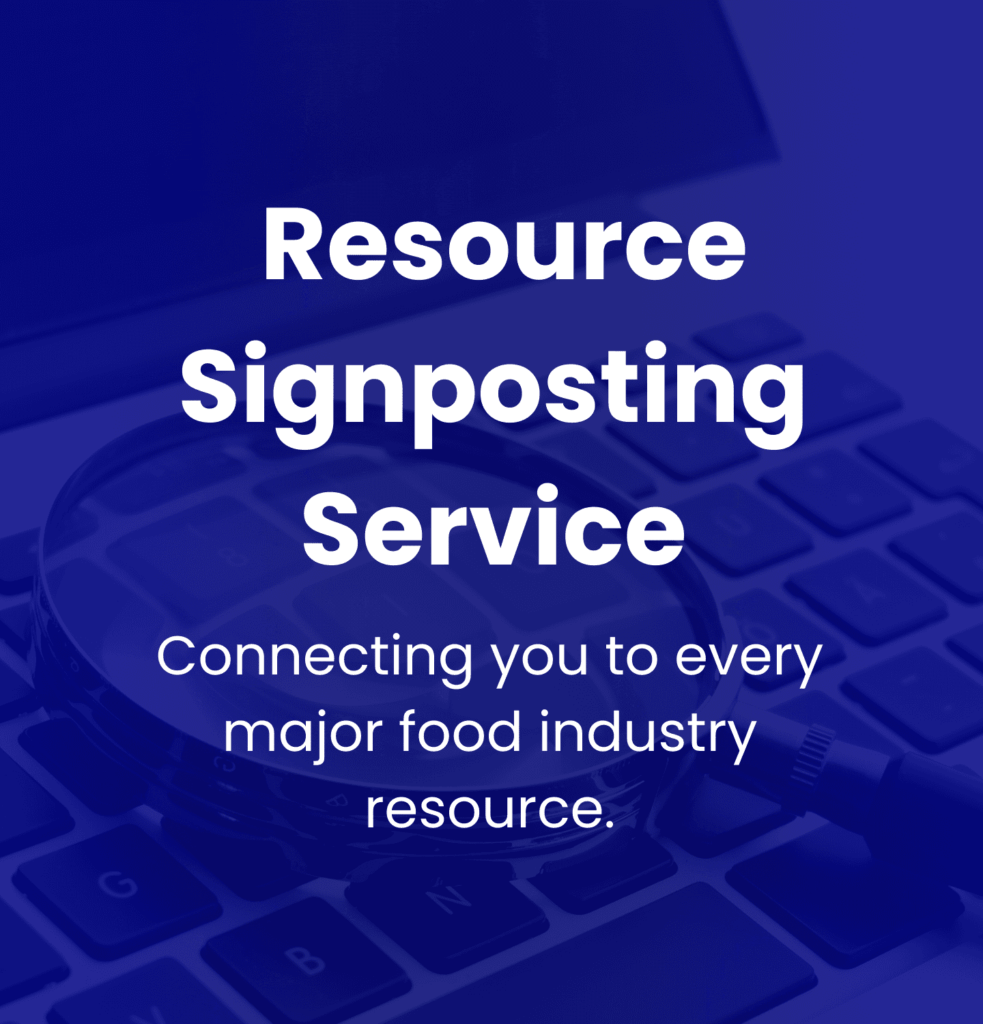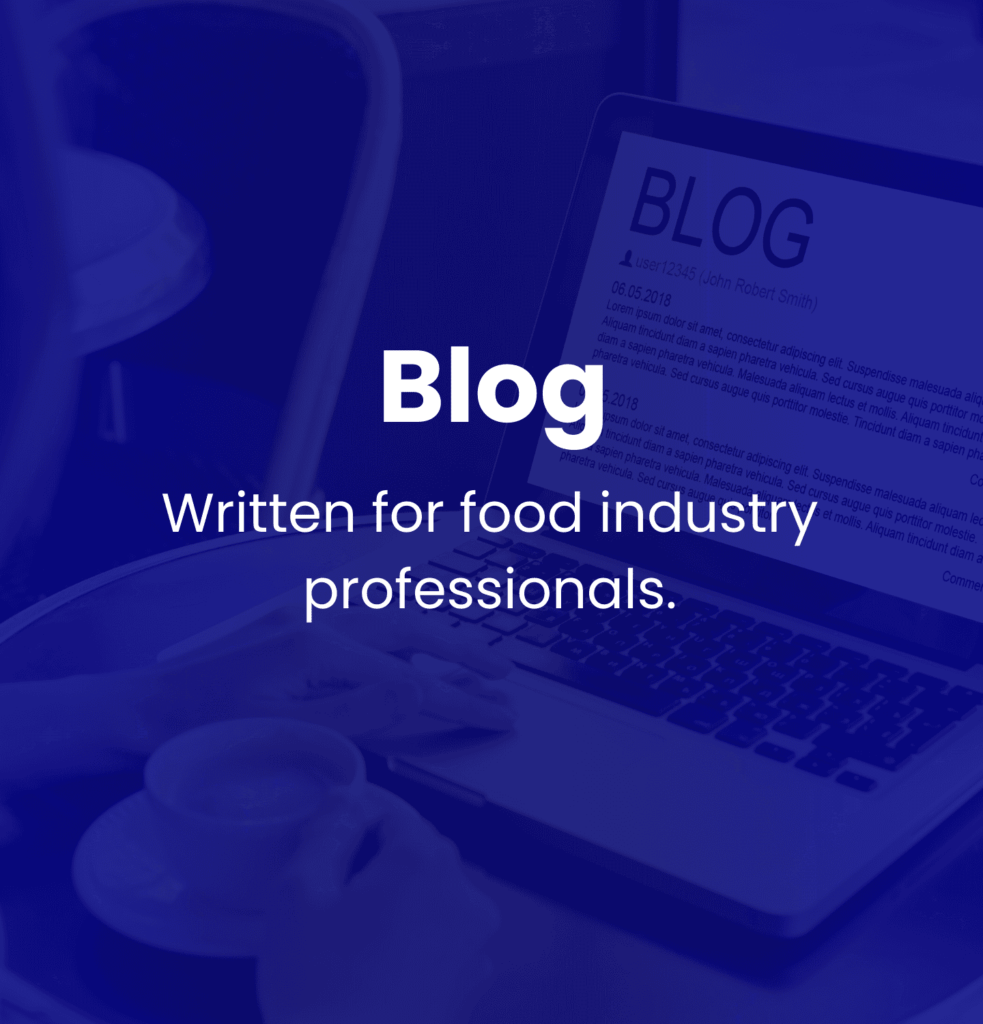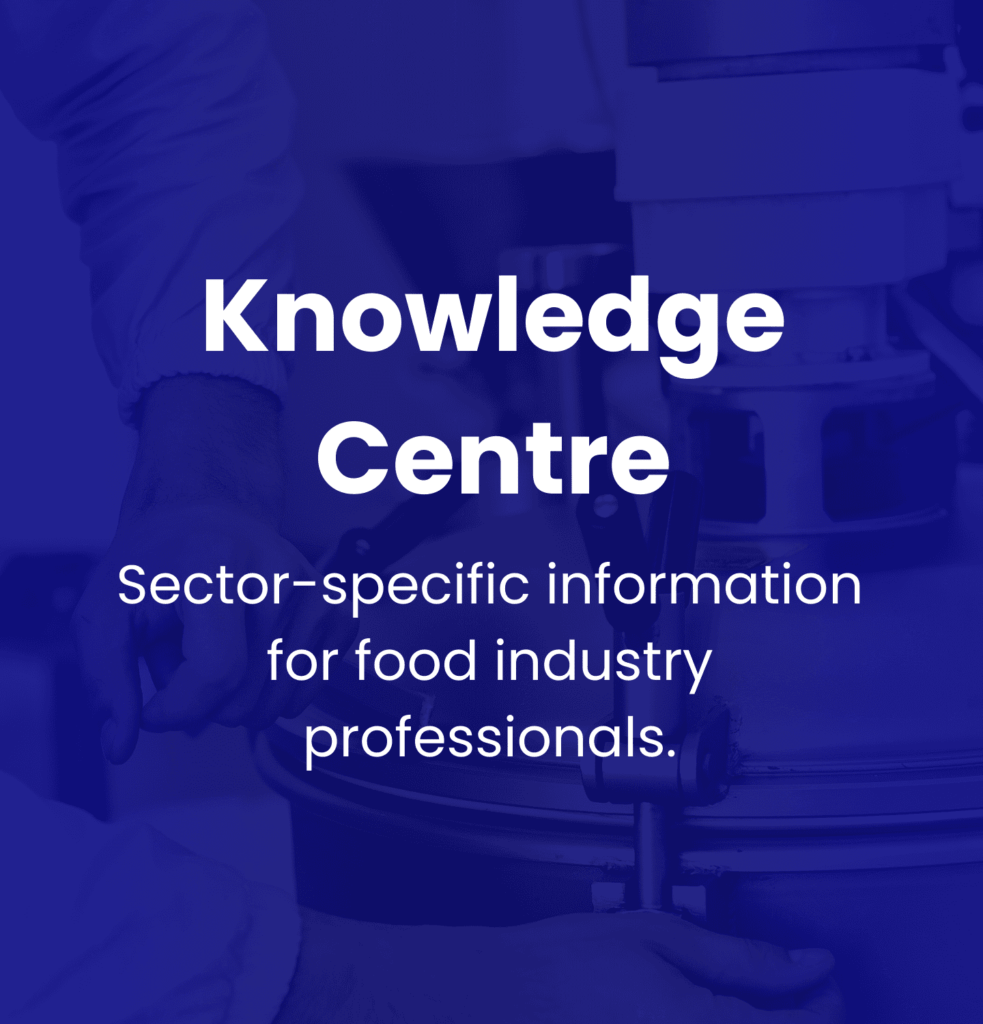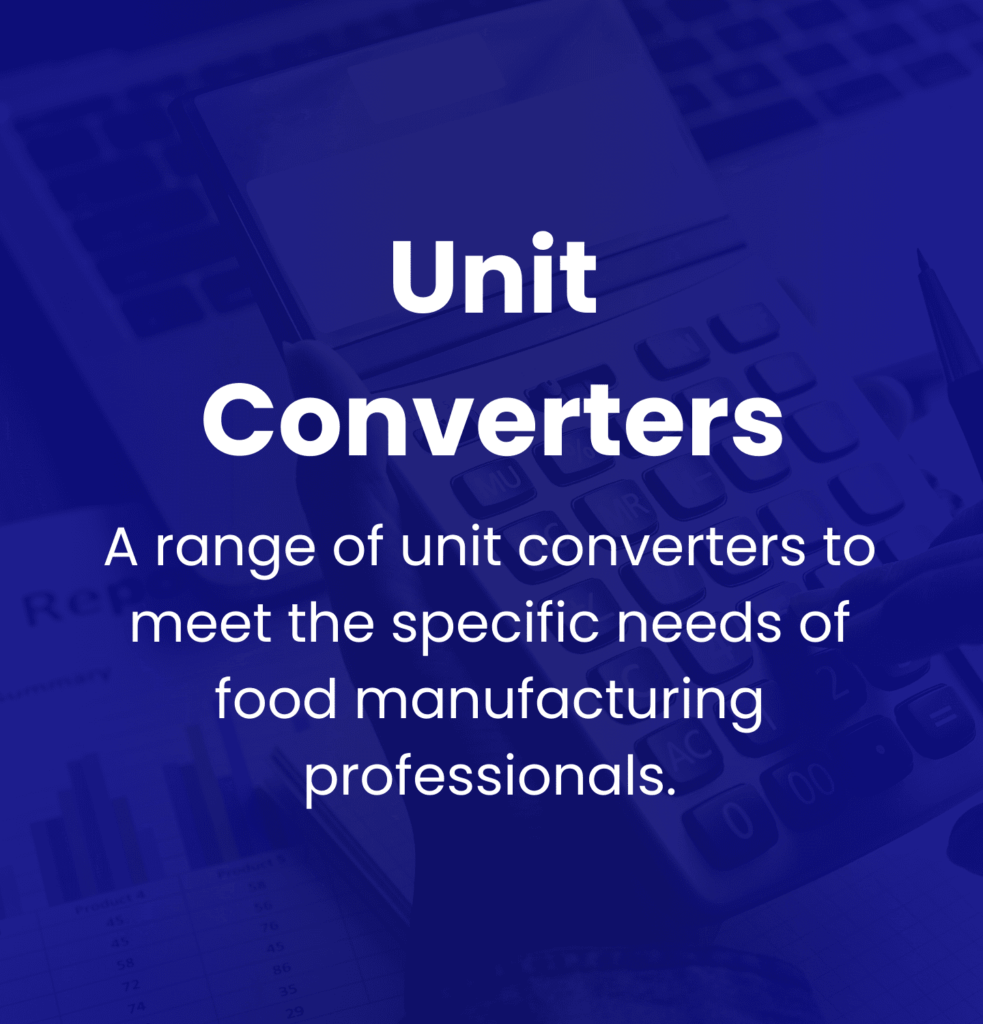Know: Legal Requirements for Food Safety
Contents
Introduction
Key Takeaways
Understanding the Fundamentals of UK Food Safety Legislation
The Influence of EU Food Safety Regulations on UK Businesses
Legal Requirements for Food Labeling
The Framework of Enforcement and Penalties
Global Standards and Compliance in Trade
Allergen Management Requirements
Emerging Technologies and Regulatory Adaptation
Regulation Evolution in Response to Climate Change
Conclusion
Introduction
As a foundational pillar of public health and international trade, food safety has wide-reaching implications. It not only shapes consumer health, but also affects the commercial sustainability of businesses globally. To balance these contributions, there exist sets of rules designed to cap the risks associated with foodborne illnesses. Annually, these diseases account for millions of cases, with significant health impacts. For example, the United States records nearly 48 million people falling ill yearly from foodborne diseases, highlighting the pertinent necessity of robust safety measures. Beneath the surface of its health-related applications, food safety also facilitates trade by compelling businesses to meet established standards. As a result, they can avert legal liabilities and secure continual access to local and international markets.
Legal Requirements for Food Safety
The legal parameters for food safety encapsulate an array of laws, regulations, and guidelines. These legal frameworks mandate safe practices across the continuum of the food supply chain: from production and harvest stages, through processing, distribution, and retailing. Specifically, these mandates disallow the selling of adulterated food, which covers products that are contaminated or produced under unsanitary conditions. They define blueprints for labelling, handling, storage and transportation of food to reduce contamination risks. Such regulations, deployed by government agencies across various levels, erect a collaborative structure that guarantees thorough supervision within the food sector.
The Role of Legal Requirements
The salience of these legal regulations stems from their ability to bolster consumer safety by reducing foodborne disease prevalence. This ensures that food items do not expose consumers to health risks. They provide a shield for businesses to avoid liabilities derived from non-compliance, which could spur costly recalls, potential legal action, and reputational damage—all factors that might spell danger for sustainability. By observing these robust regulations, businesses can sustain and encourage their market access, satisfying rigorous standards both at home and abroad.
Exploring Food Safety Themes
This article delves into fundamental aspects of food safety, including legislation on food safety in the UK, regulations for food safety in the EU, and legally mandated requirements for effective food-labeling. Each section provides an in-depth exploration of these dimensions, showing how legal frameworks offer necessary direction and structure for attaining safety, quality, and compliance in the food sector. This bundle of approaches strives to curb contamination, ensure accountability, and safeguard consumers through enforceable standards.
Key Takeaways
Compliance with food safety laws is incredibly important for both public health and food industry reputation. Following these rules helps to limit the risks related to foodborne diseases and ensures that food items are safe across the entire supply chain. Any deviation from these rules not only endangers public health but might also prompt expensive recalls and significant harm to the brand’s reputation. Upholding a dedication to compliance contributes to consumer confidence, a factor that holds importance for the economic viability of a business, particularly at a time when public trust towards food safety is closely examined.
In the period following Brexit, the regulatory setting has become more complex, as the UK interactively reshapes its food safety rules, moving apart from the European Union’s regulatory framework. These changes present hurdles for businesses. They are now forced to understand and adhere to new standards and compliance requirements that might affect aspects like product labelling, sanitation practices, and import/export procedures. Given this situation, it has become important than ever to closely monitor regulation changes and to be flexible in adapting your business practices accordingly.
Technology, in this situation, emerges as a valuable asset in ensuring compliance. Digital record-keeping systems simplify the process of maintaining documents and improve accuracy during audits and inspections, thus reducing the chance of mistakes. Digital tools takes compliance procedures to another level by providing transparent and traceable records throughout the supply chain. These systems enable quick identification of contamination sources and promotes swift responses during food safety incidents. By wisely utilising technology, food businesses can boost operational efficiency whilst emphasising their commitment to public health and safety.
The combination of abiding by dynamic regulations and the implementation of high-tech solutions prepares food businesses better to safeguard public health and fortify their reputations in a demanding market setting.
Food Industry Hub Management Systems can significantly boost the effectiveness of your food safety and quality management system, leading to improved confidence and elevated quality assurance throughout your operations.
Understanding the Fundamentals of UK Food Safety Legislation
Food Safety Act 1990 and Its Influence on Food Safety Practices in the UK
The Food Safety Act 1990 lays down the foundation for food safety, hygiene, labelling, and quality in the UK, covering England, Wales, and Scotland. It assigns key duties to food businesses, ensuring that food is safe for consumption and doesn’t pose any health hazards. It specifically bars the inclusion or subtraction of substances that could negatively impact health from food products. Staying true to the consumers’ expectations about the food products’ nature, substance, and quality is a paramount mandate. Similarly, honest labelling and presentation are requisites to prevent any deceitful claims and sustain consumers’ trust in food products. Offences against this Act, such as supplying misrepresented food or food that presents health hazards, emphasise the importance of stringent adherence to food manufacturing regulations to preserve public health and consumer trust [Source: UK Legislation][Source: Food Standards Agency].
The comprehensive reach of the Food Safety Act impacts all facets of food manufacturing, from the processing and packaging to the distribution of food products. This legal framework obliges food manufacturers to devise robust safety protocols and function with transparent operations to uphold these fundamental standards.
Hazard Analysis and Critical Control Points (HACCP) System
The HACCP system serves as an essential preventive method of securing food safety, identifying and controlling potential hazards throughout the production process. Although not explicitly cited in the Food Safety Act 1990, it has since been established as a statutory expectation through subsequent regulations such as the Food Hygiene Regulations 2013. Food manufacturing businesses are therefore required to formulate and execute HACCP-based procedures encompassing systematic hazard analyses, identification of control points, and the instatement of effective monitoring and corrective measures. This proactive stance aids in reducing the risk of contamination and foodborne illnesses, permitting continuous adherence to lawful safety standards.
Implications of not complying with HACCP can be significant, leading to severe regulatory repercussions including product recalls and legal liabilities. The systematic nature of HACCP provides a framework for routine inspections, training, and documentation, aligning well with the Food Safety Act’s rigorous standards.
Evolution of Food Safety Regulations Post-Brexit
Following Brexit, the UK has seen considerable modifications in the landscape of food safety regulation. The UK Parliament has enacted amendments to reflect new legal and regulatory structures like the General Food Law (Amendment etc.) (EU Exit) Regulations 2019, while retaining many aspects of EU-derived food safety legislation. These revisions have sustained high safety standards and allowed the UK to adapt specific regulations to address national concerns. For example, certain exemptions relating to product composition and labelling have been made to support traditional food practices and industry requirements.
In this evolving regulatory environment, manufacturers must discern both retained EU legislation and new requirements that can differ from past standards, especially those pertaining to import/export protocols. Upholding compliance with these progressing regulations is essential to maintain market access as well as guarantee consumer safety.
Mastering Key Terminology in UK Legislation
Due Diligence Defense
The Due Diligence Defense is a significant legal concept provided by the Food Safety Act 1990. It offers food businesses a chance to protect themselves against allegations of non-compliance by demonstrating that reasonable measures were taken to prevent food safety breaches. This usually includes the demonstration of comprehensive safety systems like HACCP, proper staff training, and maintenance of detailed records. This proactive management of food safety risks can alleviate liability issues that may arise, even if violations occur despite best efforts.
Rapid Alert System for Food and Feed (RASFF)
The Rapid Alert System for Food and Feed (RASFF) remains an essential mechanism for monitoring food safety across Europe even though it originated from the EU. It facilitates prompt communication about food safety risks, allowing food manufacturers to respond swiftly to alerts, manage recalls and minimise consumer risks associated with contaminated products. Gaining a deep understanding of how the RASFF works can play a crucial role for food manufacturers in ensuring compliance and protecting public health [Source: RASFF].
Through understanding these terminologies and systems, food manufacturers can adeptly navigate the legal environment of food safety, securing compliance with statutory requirements while safeguarding public health and sustaining industry integrity.
The Influence of EU Food Safety Regulations on UK Businesses
UK businesses have much to consider in terms of food safety, particularly with regard to the far-reaching effects of EU regulations. These standards not only shape the domestic landscape but also define the rules for those looking to export their products within the EU or to Northern Ireland.
Key Features of the General Food Law Regulation (EC) 178/2002 and Its Application to UK Businesses
The General Food Law Regulation (EC) 178/2002 represents a mainstay of EU food safety legislation. This regulation imparts a set of fundamental principles related to food safety, encompassing every stage from production to distribution. A pivotal aspect of these principles is the need for complete traceability of food products throughout the supply chain, which allows businesses to ascertain the origins of their ingredients and effectively track the movement of food.
The regulation demands precise labelling and safety measures that prevent dangerous products from ending up in the consumers’ hands. It highlights the duty of businesses to implement swift withdrawals or recalls when unsafe food items surface. As most aspects of this regulation are retained in the UK law under the EU (Withdrawal) Act 2018, it guarantees the continuity of food safety and consumer protection for UK manufacturers. This continuity makes regulatory compliance essential for UK businesses, especially for those exporting to the EU or Northern Ireland, as they must align with EU standards to retain access to these markets.
Enforcement Mechanisms of the EU Official Controls Regulation 2017/625 and Compliance Checks
The EU Official Controls Regulation (EU) 2017/625 reinforces the food safety oversight by laying down a uniform enforcement structure that calls for consistent regulatory checks at all points of the food supply chain. Competent authorities are entrusted to conduct regular inspections, audits, and sampling of food products to verify the compliance with safety standards and legal provisions. For UK businesses engaged in export to the EU or Northern Ireland, these enforcement mechanisms are vital.
The regulation authorises a risk-based prioritisation of inspections, facilitating more frequent checks on high-risk products such as meat and dairy. Importantly, businesses that do not conform to these checks risk facing stringent sanctions, product recalls, or even import bans [Source: Gallagher] [Source: UK Parliament Research Briefings].
Implications for Businesses Operating Under Both UK and EU Regulations, Focus on Northern Ireland
The Brexit aftermath has left Northern Ireland with a unique regulatory scenario. Under the Northern Ireland Protocol, it needs to follow selected EU food safety regulations to prevent the establishment of a hard border with the Republic of Ireland. This implies that UK companies exporting to Northern Ireland have to comply with both UK food safety laws and the EU food safety standards.
The dual compliance imposes an administrative burden which can be particularly challenging for smaller businesses without the resources for managing intricate regulatory scenarios. Moreover, businesses targeting the Northern Ireland market will need to assign an EU-based representative by December 2024 to safeguard compliance, encapsulating the ongoing complexities of maintaining regulatory compliance in the post-Brexit landscape.
Deciphering Key Terminology in EU Regulations
Introduction to the European Food Safety Authority (EFSA)
The European Food Safety Authority (EFSA) holds a significant role in the EU food safety system. Its main function is to dispense scientific counsel and risk assessments concerning food safety, thus influencing legislation, including the General Food Law Regulation (EC) 178/2002. EFSA’s evaluations span a wide gamut of issues, such as potential contaminants, allergens, and emerging food safety challenges. This body plays a key part in standardising safety measures across the EU, providing independent assessments that shape public health policies and regulatory structures [Source: EU Web Portal].
Sign-up for the Food Industry Hub Mail Service
We regularly produce new content for food industry professionals, and the Food Industry Hub Mail Service is the best way to stay up to date with the latest additions.
Signup today to be added to the Food Industry Hub mailing list.
Legal Requirements for Food Labeling
Allergen Labeling Requirements Under Natasha’s Law
As of October 1, 2021, the UK introduced Natasha’s Law, enforcing comprehensive labeling practices for food businesses trading Prepacked for Direct Sale (PPDS) items. Important to note, this law demands the inclusion of a full ingredient list on packaging, with distinctive emphasis on the 14 allergens acknowledged by the law. These include milk, eggs, peanuts, tree nuts, sesame seeds, gluten-containing cereals, fish, shellfish, soybeans, molluscs, celery, mustard, lupin, and sulfites, contributing broadly to food allergy incidents in the UK [Source: Food Standards Agency].
This law highlights the urgent requirement for absolute transparency in allergen labeling, shedding light on the peril of undeclared allergens, an issue made tragically prominent through the loss of Natasha Ednan-Laperouse. The law obliges food businesses, including cafés, delis, and supermarkets, to provide veritable ingredient information, keep it consistently updated, and train their staff in allergen management. The legislative inspections ensure compliance and protect consumer health. Non-compliance could lead to significant consequences, potentially legal fines or product recalls [Source: Anaphylaxis Campaign].
Dual Metric-Imperial Labeling Requirements in the UK
In the UK, food labeling necessitates the use of metric measurements (grams and liters), while the addition of imperial measurements (ounces and pints) remains a permissible option rather than an obligation. Many food manufacturers voluntarily include both units to accommodate consumers who are more accustomed to one system than the other. This dual labeling approach boosts clarity and improves market accessibility. Nevertheless, the current regulations do not demand a particular dual labeling practice, hence allowing manufacturers some leeway.
Nutritional Information Structure and Requirements
The regulatory landscape of nutritional labeling in the UK places a requirement on food products to display energy values (in both kilojoules and kilocalories) along with fats, saturates, carbohydrates, sugars, proteins, and salt, typically presented per 100g or 100ml. This level of nutritional labeling is not obligatory for all food items yet applicable to most pre-packed foods, encouraging consumer transparency and informed decision-making. It is pivotal for food businesses to comply with these regulations, fully aligning with the Food Information to Consumers (FIC) Regulation, overseen to provide consumers with precise and clear nutritional information.
Grasping Key Terminology in Food Labeling
Drained Weight
The term ‘drained weight’ represents the net weight of a packaged food product once any accompanying liquid, such as brine or syrup, has been removed. This measurement bears importance for consistency and accuracy in labeling, especially relevant for products like canned vegetables or seafood. By stating the drained weight explicitly on labels, food businesses can negate misleading claims about portion sizes, thus contributing to regulatory compliance and building consumer trust. Hence, accurately declaring drained weight becomes an effective practice for manufacturers to uphold transparency in their labeling processes.
Quality Indication (QI) Schemes
Quality Indication (QI) Schemes are certification programmes that vouch for the quality and origin of food products. Labels such as Protected Designation of Origin (PDO) and Protected Geographical Indication (PGI) fall under these schemes, assisting in standardising quality and production methods that comply with specific criteria. When food manufacturers participate in these programmes, they not only substantiate their product quality but also enhance their market positioning by endorsing authenticity and consumer trust. Participation in QI schemes often demands adherence to high production standards, offering an edge in the competitive marketplace.
Detailed allergen information, compliance with measurement labeling standards, and thorough nutritional data are essential to meeting legal requirements and enhancing consumer safety and confidence in food manufacturing practices.
QR Codes for Allergens
The implementation of QR codes for allergen information signifies a notable step forward in food labelling standards. In combining digital technology with product labelling, manufacturers empower consumers to access in-depth allergen information with ease. This innovation strengthens compliance with EU regulations that mandate clear communication of allergenic substances, thereby promoting consumer safety and trust in food products.
Moreover, QR codes serve as a dynamic alternative to traditional labelling methods, facilitating timely content updates and offering quick access to recall details when necessary, making them a beneficial tool for manufacturers to maintain regulatory compliance.
The Framework of Enforcement and Penalties
Role and Responsibilities of the Trading Standards Authority
The Trading Standards Authority (TSA) plays a significant role in enforcing compliance with food safety regulations in the food processing industry. The TSA undertakes responsibilities that include various activities meant to promote public health and uphold fair trading practices. Regular inspections by the TSA of food businesses play an integral role in identifying breaches of hygiene and safety standards. This oversight ensures strict adherence to the Food Safety Act and other related regulations, thus protecting consumers, especially vulnerable groups like those with food allergies, from unsafe products and misleading labelling practices [Source: Food Standards Agency].
In addition to this, the TSA carries out market surveillance activities that revolve around investigating customer complaints and verifying that food products on the market are safe and correctly labelled. This transparent modus operandi builds and maintains consumer trust, pushing food supply chains to stay compliant. The TSA works hand-in-hand with other regulatory partners such as the Food Standards Agency (FSA) to reinforce the implementation of food safety standards across jurisdictions, thereby fostering enhanced regulatory and compliance practices.
The Two-Tier Penalty System for Non-Compliance
The TSA implements a structured two-tier penalty system designed to adequately manage any non-compliance with food safety regulations.
- Informal Enforcement: For less severe or first-time breaches, the TSA may issue advisory and improvement notices. This method amicably encourages businesses to rectify issues without the need to take legal action, thereby promoting voluntary adherence to the regulations [Source: Business Companion].
- Formal Enforcement: In the case of grave, persistent, or intentional violations, the TSA may heighten matters to formal penalties that can include prosecution. Non-compliant food manufacturers may face hefty fines, which can be unlimited and proportional to the severity of the violation. Severe offences can also lead to imprisonment. This layered system allows for flexibility in enforcement, offering suitable responses based on the characteristics and seriousness of the breach [Source: Food Standards Agency].
Protocols for Product Withdrawal Following Safety Notifications
In the case of a safety notification, such as potential contamination or labelling errors, standard protocols are put into action for the swift withdrawal of unsafe products from the market. These protocols typically include:
- Issuing Safety Alerts: Working together with food businesses, the TSA facilitates urgent safety notifications that alert them of unsafe products and the necessary steps to mitigate any risks.
- Coordinated Product Recalls: The TSA, in collaboration with the FSA and other regulatory bodies, supports the rapid withdrawal of affected products, which is crucial in reducing consumer risk and managing public health concerns in an effective manner.
- Investigation and Compliance Monitoring: Once a product has been withdrawn, a comprehensive investigation intends to uncover the root cause of the safety problem. Continuous monitoring is also set up to guarantee compliance with corrective actions in order to prevent the further spread of unsafe products.
These expedited withdrawal processes not only guarantee a quick response to safety issues but also strengthen public trust in the regulatory framework overseeing food safety practices.
Understanding Key Terminology: Reporting of Injuries, Diseases and Dangerous Occurrences Regulations (RIDDOR)
Overview of RIDDOR and Its Implications
The Reporting of Injuries, Diseases and Dangerous Occurrences Regulations (RIDDOR) plays an instrumental part in preserving workplace safety, especially within the food manufacturing sector. RIDDOR strictly requires employers to report certain incidents, including fatal accidents, severe injuries, occupational diseases, and dangerous events that could potentially cause harm.
Implementing RIDDOR has several consequential implications for food manufacturers:
- Proactive Hazard Identification: This reporting requirement motivates manufacturers to recognise and handle potential workplace hazards, promoting a culture of safety amongst employees.
- Enhancing Workplace Safety: The responsibility to report under RIDDOR induces both employers and employees to prioritize safety, in turn decreasing the chances of accidents that may compromise food safety and quality.
- Data-Driven Improvements: Insights gathered from RIDDOR reports can aid the detection of trends and the improvement of health and safety practices, contributing to enhanced overall safety standards in food manufacturing facilities.
Thus, adhering to RIDDOR is not just necessary for legal compliance, but it also aids in maintaining worker safety. Indirectly, it helps in achieving the greater aim of food quality and safety by reducing disruptions caused by workplace incidents.
Global Standards and Compliance in Trade
The comprehensive framework of international food standards known as the Codex Alimentarius plays a significant role in shaping global food safety standards. Also known as the ‘Food Code’, the Codex Alimentarius is a collaborative effort between the Food and Agriculture Organization (FAO) and the World Health Organization (WHO), created to protect consumer health and ensure fair trade at a global scale. The Codex addresses a broad spectrum of food products from processed items to raw goods and hits on significant aspects such as food labelling, hygiene, food additives, pesticide residues, and safety assessments for foods derived from biotechnology. Its standards are recognised under the World Trade Organization’s ‘Agreement on the Application of Sanitary and Phytosanitary Measures’ (SPS), fortifying its authority in global food safety conversations and trade disputes. Abiding by these standards not only assures consumers about the safety and quality of food products but also cultivates trust in importers about compliance with international specifications, serving to lower trade barriers and support smoother global food trade [Source: Codex Alimentarius].
The stringent demands of US’s Food Safety Modernization Act (FSMA) pose considerable challenges for UK food manufacturers, noticeably impacting their compliance approaches. The FSMA demands a fundamental transition to preventive food safety practices that include comprehensive risk assessments and enhanced supplier verification procedures which diverge at times from UK regulatory frameworks. Specifically, UK enterprises need to adapt to an in-depth approach towards documentation and traceability, with a focus on hazard analysis and preventive controls that may not have been previously the focus in their operations. Such adaptations can escalate operational costs and demand investments towards infrastructure and staff training for compliance. Also, varying regulations, particularly in areas such as labelling and allergen management, make the US market difficult to penetrate, emphasizing the need for UK exporters to remain updated about the ever-changing US regulations and aim for conformity with internationally recognised standards like those set by the Codex.
Certifications benchmarked by the Global Food Safety Initiative (GFSI) are increasingly important to food businesses operating internationally. With a mission to standardise food safety practices across different certification schemes such as BRCGS, SQF, and FSSC 22000, GFSI allows manufacturers to showcase their compliance with rigorous food safety management practices. Obtaining a GFSI-recognised certification greatly enhances a manufacturer’s standing in the market, facilitating easier entry into multiple international markets by meeting retailer and regulatory expectations. Besides, GFSI certifications reduce the need for repeated audits from multiple customers, thereby simplifying compliance management and contributing to operational efficiency. This proves particularly beneficial for UK businesses navigating the complexities of trade post-Brexit, allowing them to assert their commitment to maintaining high food safety standards in line with global best practices.
Unpacking Key Terminology in Global Standards and Trade Compliance
Equivalence agreements play a crucial role in facilitating trade and enhancing compliance across international borders. These agreements forge a framework for countries to recognise each other’s food safety systems as providing the same level of protection despite potential variances in their regulations. By allowing acceptance of a country’s food safety measures without the need for duplicate inspections or certifications, they streamline the trade process. For food manufacturers, equivalent agreements can greatly reduce regulatory burdens, expedite market access, and enhance compliance by ensuring that their products can sail smoothly into various international markets with minimum barriers. They promote trust and cooperation amongst regulatory authorities, while still upholding high consumer protection standards. For UK businesses aspiring to expand globally post-Brexit, a comprehensive understanding and effective use of these agreements could be decisive in overcoming regulatory challenges, enhancing their trade efficiency.
Allergen Management Requirements
Overview of the 14 Allergenic Materials Requiring Labeling in the UK
UK food manufacturers are under legal obligation to clearly label 14 primary allergens to facilitate effective consumer protection against allergic reactions. These allergens comprise celery, cereals containing gluten (which includes wheat, rye, barley, and oats), crustaceans, eggs, fish, lupin, milk, molluscs, mustard, peanuts, sesame seeds, soybeans, sulphur dioxide/sulphites (at levels over 10 mg/kg), and tree nuts (such as almonds and hazelnuts)
[Source: Food Standards Agency]. Under Food Information to Consumers Regulation (EU No. 1169/2011), retained in UK law, manufacturers must visibly highlight these allergens in ingredient lists via techniques like bolding, italics, or contrasting colors. This regulation aids consumers in making safe choices when purchasing pre-packed foods, including those pre-packed for direct sale (PPDS) [Source: Food Guidance].
Regulations and Best Practices for Precautionary Allergen Labeling (PAL)
Precautionary Allergen Labeling (PAL) is a voluntary measure adopted by food manufacturers when potential cross-contamination cannot be completely eliminated despite rigorous cleaning or production protocols. Even though PAL is not legally required, ensuring such labeling does not mislead consumers about food safety risks is essential. It is generally recommended that PAL should only be employed after a detailed risk assessment has established potential unintentional allergen presence. According to guidance from the Food Standards Agency (FSA), PAL should be specific and justified, and should avoid general phrases that can cause unnecessary consumer worry.
Emerging Technologies and Regulatory Adaptation
Improving HACCP Processes with Artificial Intelligence
Artificial Intelligence (AI) is taking leaps in enhancing Hazard Analysis and Critical Control Points (HACCP) systems that form the backbone of food safety management. AI utilises machine learning algorithms to analyse comprehensive datasets generated from food production processes, enabling potential hazard prediction. This contributes significantly to a proactive approach towards food safety management, as it can identify patterns that may suggest deviations at critical control points. This allows intervention before minor issues escalate into significant concerns.
AI also enables automation when monitoring critical control points. This substantially reduces the chance of human error and helps guarantee that safety checks are performed with enhanced accuracy. This functionality becomes especially beneficial as food safety regulations evolve and impose stricter safety controls considering the complexities of contemporary manufacturing environments.
Evolving Standards and Requirements for Novel Foods
Regulatory conditions for novel foods—which include products made with unconventional ingredients or pioneering production techniques—are continually evolving to meet new safety challenges. Regulators like the FDA and the European Food Safety Authority (EFSA) are in the process of setting comprehensive safety assessment standards, necessitating extensive safety, nutrition, allergenic properties product documentation, and more. There’s considerable emphasis on maintaining detailed traceability and transparency as manufacturers navigate the approval processes for these novel products.
Recent modifications in regulatory frameworks indicate a shift towards a science-based approach to safety, with a focus on evidence and documented compliance. Given this evolution, it is essential for food manufacturers to maintain their adherence to compliance protocols vigilantly.
Regulation Evolution in Response to Climate Change
Extended Producer Responsibility (EPR) Driving Sustainable Practices
Extended Producer Responsibility (EPR) is redesigning the way food manufacturers think about sustainability, focusing heavily on responsible packaging management. EPR frameworks push producers to shoulder the responsibility for the disposal and recycling of their products. This pragmatic approach spurs food businesses to engineer packaging in ways that drive sustainability and recyclability, echoing the core values of a circular economy.
States including Oregon (2025), Colorado (2026), and California (2027) are leading in implementing comprehensive EPR legislation. This legislation calls on food manufacturers to register and adhere to their waste management responsibilities. It also incentivises creative thinking, requiring businesses to lean towards recyclable or compostable packaging solutions, while charging higher penalties for those using non-compliant materials.
EPR catalyses cooperative relationships between the public and private sectors, enhancing recycling infrastructure. The Sustainable Food Policy Alliance advocates for an integrated national EPR program. It underscores the importance of appropriate funding allocation and the robust upkeep of recycling systems, contributing to environmental conservation and enhancing brand appeal by demonstrating dedication to sustainability initiatives. So, complying with EPR not only limits environmental damage but also significantly improves a company’s standing in a market that is progressively environment-conscious.
Emerging Regulations Concerning Water Use in Food Production
The juncture of climate change and water scarcity is prompting stricter rules on water use in food production. Regulations vary widely by region, but there’s a common trend towards improved monitoring and management of water resources. An example of this shift can be seen in California’s Sustainable Groundwater Management Act (SGMA). This act pushes food manufacturers towards adopting water practices that pay heed to sustainability, like putting closed-loop systems and practical water recycling methods into play.
Legislation such as this urges manufacturers to reduce water consumption and decrease wastewater contamination, integrating water resource management into their operational strategy. As legal standards advance, companies need to gear up for sturdy compliance requirements around their water usage metrics that could significantly affect overarching sustainability efforts and operational robustness.
Comprehending Key Terminology in Climate Change and Regulatory Evolution
Scope 3 Emissions Reporting and Implications for Food Production
Scope 3 emissions refer to indirect greenhouse gas emissions that arise from a company’s supply chain activities. These emissions often form a large part of a business’s overall carbon footprint. For food manufacturers, Scope 3 emissions emerge from agricultural practices, transportation, packaging disposal, and consumer use. This underscores the need for food businesses to devise solid systems for measuring and reporting these emissions, especially in the light of fresh regulatory requirements like California’s SB-253, which pertains to climate disclosures.
The consequences of analysing Scope 3 emissions are consequential. This transparency triggers operational enhancements within supply chains and necessitates co-operation with suppliers to inculcate environmentally responsible practices throughout food production. By efficiently tracking these emissions, businesses can not only bolster their sustainability endeavours but also attune better with the developing regulations that aim at reducing the overall environmental impact of the food industry.
Conclusion
Revisiting the Significance of UK Food Legislation
UK food legislation is the backbone that ensures safety, quality, and compliance in the food manufacturing industry. At the heart of this legislative network is the Food Safety Act 1990. This act defines offences relating to food safety, quality, and labelling, protecting consumers and reinforcing industry standards. Working in conjunction with this, the General Food Regulations 2004 uphold provisions from retained EU laws, like Regulation (EC) 178/2002, ensuring food businesses supply safe food to the market [Source: AIB International]. These regulations create a strong regulatory environment, offering a solid foundation for protecting public health and bolstering consumer trust. They hold manufacturers accountable for maintaining hygiene standards and accurate labelling [Source: Virtual College].
Trade Laws and EU Regulations’ Impact on Food Safety in the UK: An Overview
Despite Brexit, the UK food sector continues to mirror key EU food safety regulations embodied in UK law. Thus, it assures consistency in trade and maintains high operational standards. The General Food Regulations 2004 incorporate retained EU food law, which is essential for continued access to European markets and preservation of food safety within the UK [Source: Food Standards Agency]. The role of supervising compliance is still carried out by the Food Standards Agency. Present trade laws require UK manufacturers to satisfy both UK-specific and EU-based standards, particularly about labelling and safety requirements. This twin-compliance framework helps to avoid market disruptions and ensure public health.
The Evolution of Food Safety Technology and Projected Trends
The food manufacturing industry, over time, has seen substantial progress in food safety technology. This advancement is aimed at improving monitoring, traceability and contamination control mechanisms. Technologies such as digital tools for supply chain visibility, real-time microbial detection systems, and predictive analytics powered by Artificial Intelligence are now core elements in food safety management. These technologies equip manufacturers to quickly spot potential hazards, track products through complex supply chains and meet regulatory requirements more efficiently.
In the future, the industry seems set to adopt more automation, improved IoT sensor integration, and the use of big data analytics for proactive prediction and mitigation of food safety risks. There’s also a rising focus on sustainability along with safety. This has led to the advent of technologies that aim to minimise waste and energy usage while adhering to strict safety standards. Such innovations are poised to become indispensable for UK food manufacturers as they compete internationally and adapt to changing consumer demands and regulatory expectations.
From this analysis, it’s evident that UK food legislation, underpinned by necessary acts and regulations, is essential in maintaining the integrity and safety of food manufacturing. The interaction of UK and EU laws continues to influence the compliance requirements, particularly in trade contexts, while technological advancements look set to transform food safety management and raise industry standards in the future.
About The Food Industry Hub Knowledge Centre
The Food Industry Hub knowledge centre delivers informative content on a variety of topics pertinent to the food manufacturing industry.
You can return to all topics by clicking here.
From The Food Industry Hub Signposting Service
Additional resources from The Food Industry Hub Signposting Service.
From The Food Industry Hub Blog
Expanding on this topic with related content from our blog.
